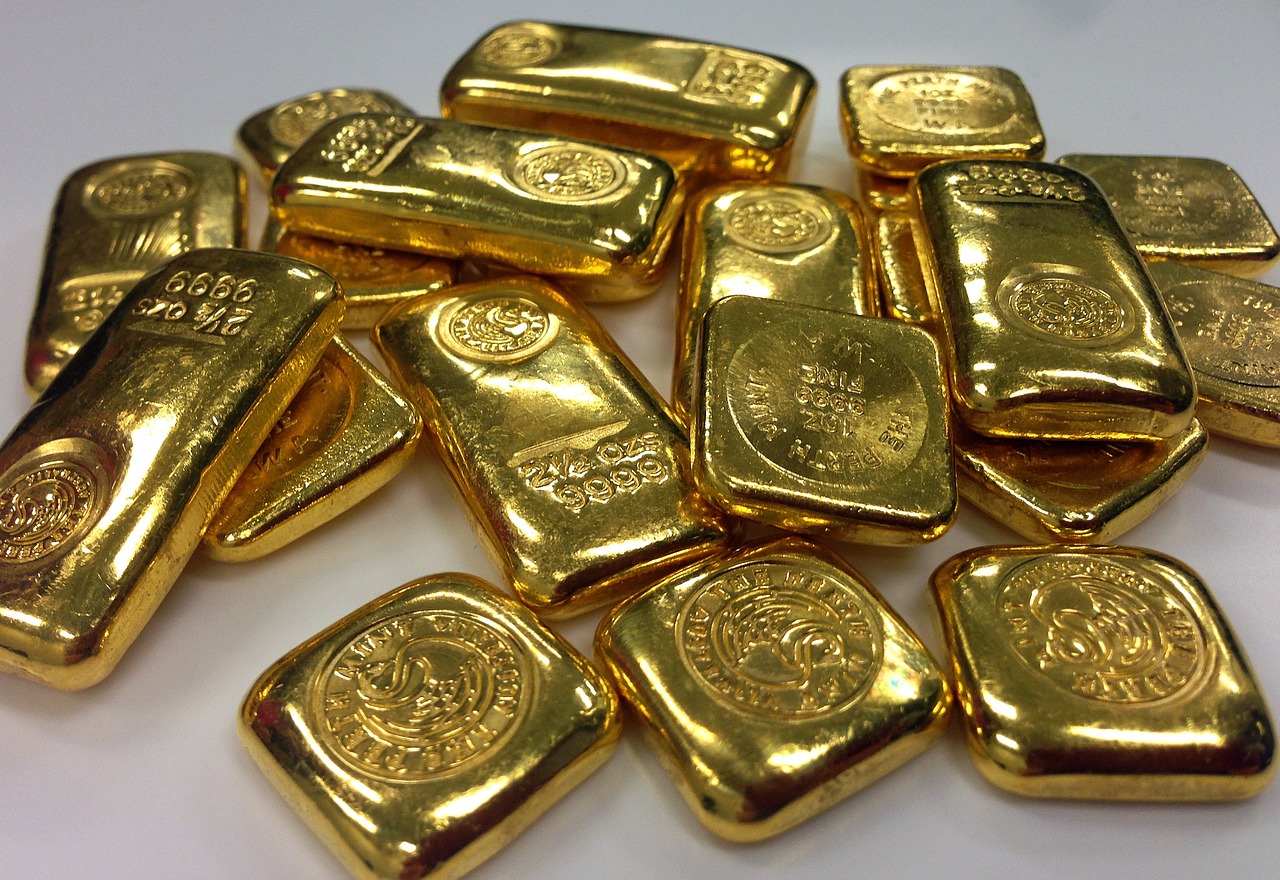
Gold is defying expectations, soaring to record highs despite rising interest rates and a strong dollar—two factors that should traditionally hold it back. Gold doesn't generate income, unlike other assets, making it less appealing when bonds and cash offer attractive yields. Yet, its resilience sends a powerful message in today's uncertain world. Investors seek safety, and history warns that ignoring gold's signals during stress can be costly.
Can gold go higher from here?
Gold's bullish momentum has shown no signs of slowing down, with the precious metal outperforming most asset classes in 2024 with returns of 25% and continuing its record-breaking rally with year-to-date returns of 9.25%. Diversification is a key driver of this surge, as central banks, investors, and institutional players increasingly turn to gold as a hedge against economic uncertainty. With rising demand and global markets facing ongoing volatility, gold's appeal as a safe-haven asset remains stronger than ever. Investors are watching closely, wondering just how high it can climb.
Could this be the start of an even bigger gold rush?

Source: Barchart
The chart above reveals how gold prices (black) have trended higher. Traditionally, gold is not strong when interest rates (blue) and the US dollar (brown) increase. However, due to geopolitical concerns, the demand for gold has defied the traditional pattern.
The gold market trades similarly to other markets and does not go straight up; it moves up and down. Investors and traders could use price corrections to purchase gold at discounted prices. China is known for aggressively buying gold on dips, while others may purchase gold during times of upward momentum. While timing markets can be complex, there are techniques and studies to assist in finding times when gold is on sale at discounted prices.
Seasonal patterns
While seasonal patterns cannot predict what markets will do, they reflect what the market has done historically over multiple periods, such as 5, 15, and 30 years. Often with high probabilities of 80-100% occurences. I prefer to use seasonal patterns as a market screener that reveals a period during the year when a market has a high probability of going up or down, then apply further technical and fundamental analysis to see if the pattern may occur again this year. Never mindlessly buy or sell a seasonal pattern without your due diligence. Treat seasonal patterns as a roadmap and your analysis as the vehicle to navigate.
As a crucial reminder, while seasonal patterns can provide valuable insights, they should not be the basis for trading decisions. Traders must consider other technical and fundamental indicators, risk management strategies, and market conditions to make well-informed and balanced trading choices.
Moore Research Center, Inc. (MRCI) is a well-known and trusted provider of seasonal research. Their research finds that in the past 15 years (black), the gold market has had a historical seasonal high or low occurring in particular months of the year.

Source: MRCI
Historically, the first quarter of the year has been bullish for the gold market. Currently, this trend is still intact and is due to find some selling pressure near the beginning of March. But, until then, gold appears to have bullish momentum.

Source: Barchart
The daily gold chart is marked to overlay the bullish and bearish periods of gold's seasonal pattern. This can be compared to the MRCI seasonal pattern posted above. Remember that during an uptrend of a seasonal pattern, the resulting corrections can be sideways or lower.
Disaggregated Commitment of Traders (COT) report

Source: CME Group Exchange
The recent COT report reflects the bullishness of the managed money sector. As gold prices (yellow) rallied in the first quarter, managed money bought more contracts each week (blue).
Gold is in a technical uptrend, confirming the seasonal buy pattern. Well-capitalized trend followers who manage money are still buying at these levels.
Assets to participate in the gold market
In a recent article for Barchart, "Less = More with the New Gold Futures Contract," I discussed multiple available assets, including the new one-ounce futures contract from the CME Group Exchange.
In the past, futures traders could participate in these moves using the standard-size contract (GC) or the micro-size (GR) contract, and equity traders could use the exchange-traded fund (ETF) symbol (GLD). Additionally, investors could purchase physical gold in the spot market.
Retail traders, are you ready for this? On January 13, 2025, the Chicago Mercantile Exchange Group (CME Group) will respond to your request for a more affordable futures contract for trading gold.
The original standard-size gold contract (GC) trades 100 ounces per contract. At the current price for the February futures contract of $2,636 per ounce, the nominal value of the contract is $263,600. The contract requires $11,500 of margin capital per contract traded. Every $1.00 move in the GC contract is worth $100. The 10-day average daily range for the GC is approximately $37, with a nominal movement of $3,700 per day.
The recent addition of the micro-size gold contract (GR) trades 10 ounces per contract. At the current price of $2,636 per ounce for the February futures contract, the nominal value of the contract is $26,360. The contract requires $1,150 of margin capital per contract traded. Every $1.00 move in the GR contract is worth $10. The 10-day average daily range for the GC is approximately $37, with a nominal movement of $370 per day.
"CME Group's Micro Gold futures products are already among the fastest growing metals products, reaching record levels of participation this year. The average daily volume (ADV) for Micro Gold futures year-to-date is a record 105,000 contracts."
While the GR contract is more affordable than the GC for many traders, there has still been significant demand for a smaller gold contract from the retail trading base.
To answer this request, the CME Group will launch a 1-ounce gold futures contract on January 13, 2025, aimed at the retail client.
Specifications for the new gold contract are:
Contract Size: 1 ounce
Pricing: US dollars and cents per ounce
Tick size: $0.25 (note the GC and GR contracts are $0.10)
Trading symbol: 1OZ
Expiration months: Feb, Apr, Jun, Aug, Oct, & Dec
Settlement method: Cash settled
The features of the 1OZ contract allow traders to track the price of gold more accurately. The 1OZ futures are directly tied to the spot price, offering accurate market exposure.
In Closing..
Gold's relentless climb defies conventional wisdom, signaling a shift in market dynamics that traders cannot ignore. The momentum remains strong, with central banks, institutional/private investors, and speculators piling into gold. As history has shown, when gold breaks out, it often continues higher—offering lucrative opportunities for those strategically positioned. Whether through futures, ETFs, or physical gold, traders have multiple ways to capitalize on this ongoing rally.
The introduction of CME Group's new 1-ounce gold futures contract makes it even easier for retail traders to participate in the market. With a lower capital requirement and direct exposure to gold prices, it provides a flexible entry point for those looking to seize the opportunity. As gold continues its upward trajectory, traders who recognize its signals and act decisively could be well-positioned for significant gains. The question now isn't whether gold will move—but how traders will take advantage of it.







